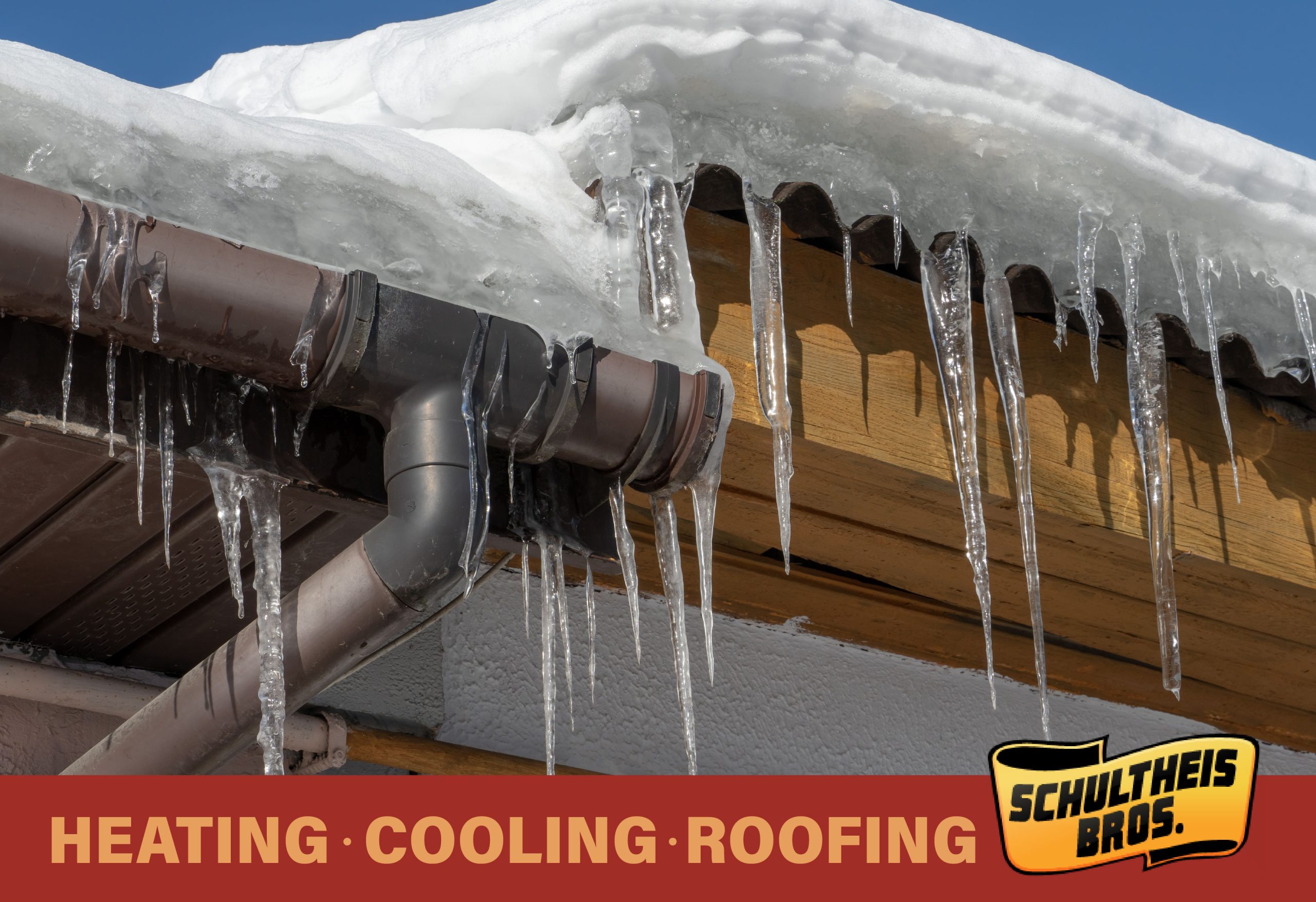
The first heavy snowfall comes for the season, and suddenly your roof begins to leak. Icicles form at the edges of your roof. Why is this happening?
These are ice dams forming at the edge of your roof, preventing melting snow from draining off the roof efficiently. This becomes a problem for several reasons: a leaking roof, water damage in your home, rust, or a sagging roof.
What are Ice Dams and How Do They Form?
Ice damming is no stranger to homeowners in Western PA and is the process of ice building up in your gutters and the edges of your roof, preventing melting snow from draining properly. The variation of temperatures on the roof, and gutters causes this and typically involves the following process:
- Snow Accumulation: The snow on the roof acts as insulation in the winter, preventing warm air from escaping through the roof.
- Roof Temperature Variation: The heat from within your house rises, causing the surface temperature of your roof to rise. The warmer roof surface causes the snow on the upper part of the roof to melt while the lower part of the roof stays cooler.
- Meltwater Runs Down: As the melted snow turns to water, it runs down to the bottom of your roof.
- Freezing at the Eaves: As the water reaches the colder edges of the roof and the colder metal of the gutters, it refreezes, forming ice dams.
- Blocked Drainage: As this process continues to melt and refreeze, your roof and gutters are sustaining potential damage.
How Ice Dams Cause Damage to Your Roof and Gutters
Ice dams can cause significant damage to your roof, gutters, and even the framework of your house. The most common issues arising from ice dams include:
- Water Infiltration: This happens as the process of water melting and refreezing at the ice dam. This water then begins to infiltrate the shingles as the ice level rises.
- Roof Leaks: Just like water infiltration, the ice dam increases in size and allows the melted snow to rise up the roof. Sometimes this water finds gaps in the roof, leading to leaks in your home.
- Gutter Damage: As the ice dam’s size increases, so does the weight. This increased weight along with the freezing and thawing cycle of the ice causes long-term damage. Watch for warping, rotting, and other forms of physical damage. This is one of the most common issues that arise with ice dams.
- Fascia Board Damage: The fascia board is the horizontal board that runs along the edge of the roof. As the ice continues to push against the fascia, it causes warping, rotting, and rust to form.
- Shingle Damage: As water seeps under the shingles during the thawing and refreezing process, it expands and contracts. This change can make the shingles lift causing them to crack or break.
- Insulation Compromise: Ice dams are a typical symptom of improper insulation and ventilation in the attic. Over time, ice dams compromise the insulation of the attic, making it less effective and increasing your energy costs.
- Mold & Mildew: Consistent water infiltration through the roof can cause longer-term issues. Mold and mildew are common problems that occur in the attic and on interior surfaces of the house. This can pose a potential health risk to you and your family.
How to Prevent Ice Dams and Remove Them Safely
Ice dams are dangerous to remove and taking preventive action can help reduce long-term issues. If you see ice dams forming, search for the root cause of the issue. This may include improving ventilation, insulation, or sealing in the attic to maintain a consistent roof temperature. Also, check your downspouts and gutters for debris that can potentially cause the ice dam to start.
In a situation where you need to remove an ice dam that is causing issues, use extreme caution. Always avoid climbing the roof if at all possible. In certain situations, Schultheis Brothers suggests using a salt from Calcium Chloride to make paths in the ice. This will help with the drainage of new water melting.
The Calcium Chloride salt causes the least amount of damage to the shingles of your roof. This salt also works at lower temperatures making it ideal to melt the ice forming on your gutters. You should avoid other rock salts that you find for your walkways because they will cause long-term damage to your shingles.
Heated Cable Installation
If Ice dams are a frequent issue, contact Schultheis Brothers to consider a heated cable installation. People also know heated cables as heat tapes or de-icing cables. We install these cables where ice dams most frequently build up. These cables provide a source of heat to melt the snow and ice around it.
How Heated Cables Work
- Installation: Heated cables are placed where ice frequently forms. This is often along the eaves of your home, in your gutters, and in your downspout. The cables may also be installed in a zig-zag pattern along ice-prone areas of your roof.
- Heat Generation: When turned on, the cables generate heat. This prevents ice from forming on the edges of your roof and in your gutters.
- Continuous Operation: Heated cables are designed to be left on throughout the winter. Some also come with thermostats to are temperature-controlled and turn on when needed.
As a longer-term solution, call Schultheis Brothers today for an estimate on heated cables to prevent the ice from forming. While heated cables can be effective in preventing ice dams, it’s important to find the root cause of the issue. Always remember to use extreme caution while resolving an ice dam issue on your own.
